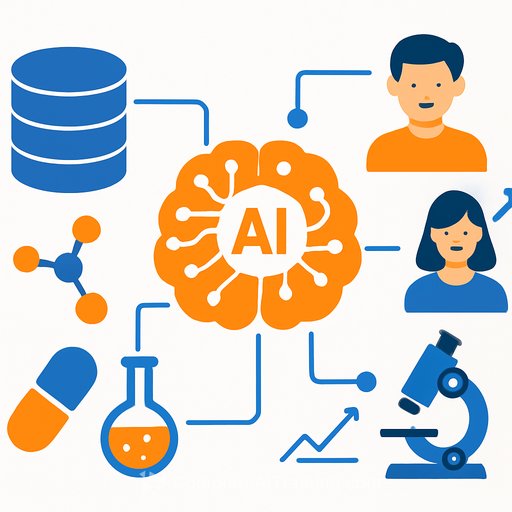AI-Powered Platforms Are Making Complex Data Usable for Drug Discovery
Industry Insight | Published: November 10, 2025
At ELRIG this year, the themes were clear: integrate data, improve reproducibility, and apply AI with transparency. Sonrai Analytics sits right in that pocket with Sonrai Discovery, a cloud-based trusted research environment that brings multiomic, imaging and clinical data into one place so teams can actually work from the same source of truth.
We spoke with Chris Brooks, chief commercial officer, and Dr. Hamzah Syed, director of strategic solutions, about how their platform turns fragmented datasets into decisions.
Why this matters now
Drug discovery teams are drowning in disconnected data. Genomics, proteomics, pathology images and clinical records rarely live together, and even when they do, they're hard to compare or reuse.
That's why data standards, auditable workflows and shared environments are taking center stage at conferences like ELRIG. Without them, promising signals never make it into validated findings.
What Sonrai Discovery is
Sonrai Discovery is a secure, cloud TRE built for multi-modal research. Teams can integrate, analyze and share multiomic, imaging and clinical data within a single collaborative workspace.
The platform supports data from Azure, AWS and on-prem/HPC sources. Built-in tools like RStudio, Jupyter Notebooks, MLflow and one-click pipelines keep work moving without context switching.
How AI is applied
According to Dr. Syed, AI is used to make fragmented data usable. Models help integrate molecular, genomic, proteomic and pathology image data so researchers can connect signals across modalities.
The goal is straightforward: speed up biomarker discovery and precision medicine research by removing friction in data prep, integration and analysis.
Reproducibility by default
Sonrai's approach focuses on standardization and traceability. Models are trained on millions of data points and validated on verified datasets to keep outputs consistent and credible.
- Version-controlled analysis environments and fully traceable workflows
- Standardized data processing across studies and teams
- Auditable outputs ready for QC reviews and regulatory submission
This gives teams confidence that results can be rerun, checked and reused without surprises.
Collaboration without bottlenecks
Shared workspaces let bioinformaticians, clinicians and data scientists work side by side. Data is integrated from diverse sources, then explored with common tools inside the same environment.
That transparency reduces dependencies on a single expert group and helps cross-functional teams interpret signals together.
From results to decisions
Because work happens in an auditable environment, teams can generate reports, visualize outcomes and share findings with stakeholders directly in the platform. Clear lineage builds confidence and shortens the path to internal decisions.
Where AI in drug discovery is heading
Generative methods are gaining traction, but Dr. Syed stresses that data quality and reproducibility come first. Sonrai is developing foundation models for imaging-covering whole-slide and immunofluorescence-that can connect with omics and clinical data.
As Chris Brooks notes, standardized and validated inputs produce more reliable outputs. Over time, trusted AI pipelines will move from pilots to routine practice.
The trust barrier
Adoption often stalls on trust. Many researchers still see AI as a black box. Sonrai leans on open-source tools, transparent data ingestion and end-to-end audit trails so teams can see exactly what happened and why.
Education matters too. Human-in-the-loop workflows help teams build confidence as they watch models perform under real constraints.
Interviewees
Chris Brooks, Chief Commercial Officer, leads commercial strategy, partnerships and customer engagement across pharma and biotech.
Hamzah Syed, PhD, Director of Strategic Solutions, works with organizations to build data and analysis strategies that advance multiomic, imaging and clinical research.
Practical next steps for research teams
- Run a quick data audit: list sources, formats, access controls and known quality gaps.
- Adopt a TRE with versioned environments and audit trails to reduce manual tracking.
- Standardize pipelines for common assays; lock parameters and log all runs.
- Pick common tools (RStudio, Jupyter, MLflow) and make them available in shared workspaces.
- Pilot a single use case (e.g., WSI feature extraction + RNA-seq) and measure reproducibility.
- Align on data principles like FAIR to improve reuse across studies.
- Invest in team skills so more stakeholders can read, question and validate outputs.
Further learning
If you're building AI and data fluency across roles, explore practical course paths by job function at Complete AI Training.
Your membership also unlocks:






